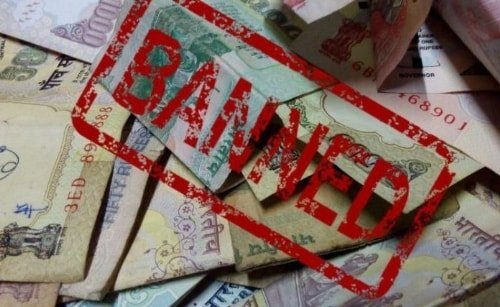NEW DELHI, November 14, 2016 /PRNewswire/ —

Facts
The demonetization of 500 and 1000 rupee banknotes is a step taken by the Government of India on 8th November 2016 to fight corruption and black money issues in the country. Starting from midnight of 8th November 2016, all 500 and 1000 rupee notes ceased to be accepted as a form of legal tender in India. The announcement was made by the Prime Minister of India, Mr. Narendra Modi in a live televised address to the nation. In the announcement, Modi declared circulation of all 500 and 1000 rupee banknotes (approximately $7.50 and $15 USD respectively) of the Mahatma Gandhi series as invalid and announced the issuance of 500 and 2000 rupee banknotes (approximately $7.50 and $30 USD respectively) in the new Mahatma Gandhi series in exchange for the old banknotes.
On 28th October 2016, the total currency in circulation in India was Rs. 17.77 lakh crore (US$260 billion). In terms of value, the annual report of Reserve Bank of India of 31st March 2016 stated that total banknotes in circulation valued to Rs. 16.42 lakh crore (US$240 billion) of which nearly 86% (i.e. Rs. 14.18 lakh crore (US$210 billion)) was 500 and 1000 rupee notes. In terms of volume, 24% (i.e. 2,203 crore) of the total 9,026.6 crore banknotes were in circulation.
Globally, this is not unusual. Central banks of several countries pump massive amounts of cash into the economy, mostly in very large denominations. In the US, $100 note accounts for 80% of the cash supply. In Japan, ¥10,000 note (about $100) accounts for 90% of total cash holdings. Across countries, most of this cash has been supporting underground black economies.
This is not the first government to demonetize large currency bills. European Central Bank head Mario Draghi announced that they were considering abolishing the region’s most-valuable bank note (the 500 euro bill) in order to curb tax evasion and terrorism financing. Also, US treasury recommended that the $100 bill be demonetized.

Why it is done?
The demonetization was done in an effort to stop the counterfeiting of the current banknotes alleged to be used for funding terrorism and for cracking down on black money in the country.
This is a major setback to the parallel black money economy because a lot of currency operating outside the system will now have to be brought into the banking system. The government believes that this decision has been welcomed everywhere. This major step with help India’s credibility. It will help lower the cash circulation in the country which is directly related to corruption in the country. Moreover, it will eliminate fake currency and dodgy funds which have been used by terror groups to fund terrorism in India.
Impact of the move
It is a big reform which no one expected and will have a huge impact on people who are hoarding money and not disclosing money for tax purposes. This is overall a positive move that is lauded by a lot of people and could bring more confidence in Indian markets by overseas investors.
It’s perhaps the most significant move ever taken to curtail the parallel economy. It will give a sharp boost to all formal channels of payments (a shift from cash economy to cashless digital economy) which in turn will help the formal economy to grow at a faster clip in the long term.
Mr. Modi has made the right investment for the next generation. This move should improve India’s position on transparency and corruption in the global league table enabling higher capital flow (FDI/FII) into India.
Also, demonetization will increase bank’s deposits by a huge margin. This will also increase the lending activity because banks have a CRR (cash reserve ratio) to maintain and with more deposits they can do more lending. Credit (loans) will become easier and interest rates may come down. Thus, it will attract more foreign investments in near future.
Further, the move will probably push down property prices, including land prices as investors will not be able to utilize their cash in real estate and thereby forcing builders to sell at lower prices. Greater transparency in Indian real estate sector will assist in improving the country’s image and attract more foreign investments.
How Ban on 500 and 1000 Currency Notes affects FDI?





